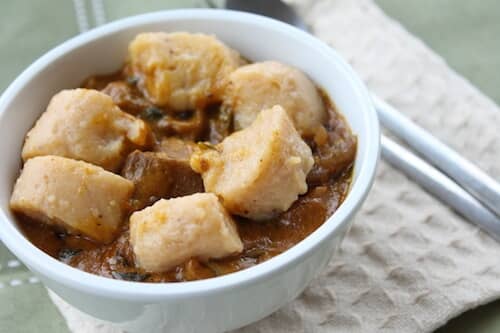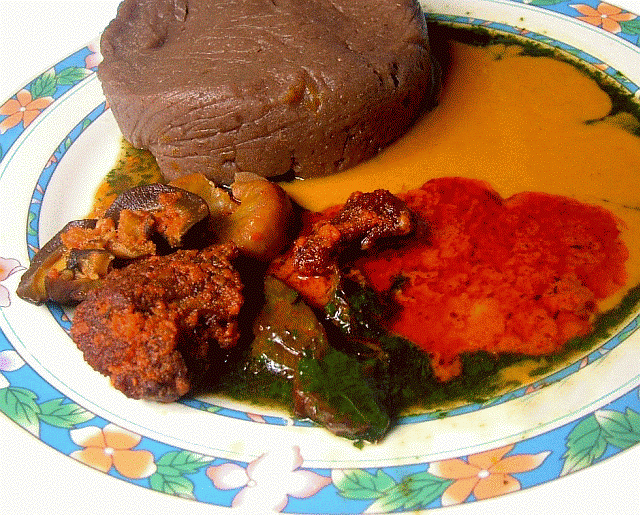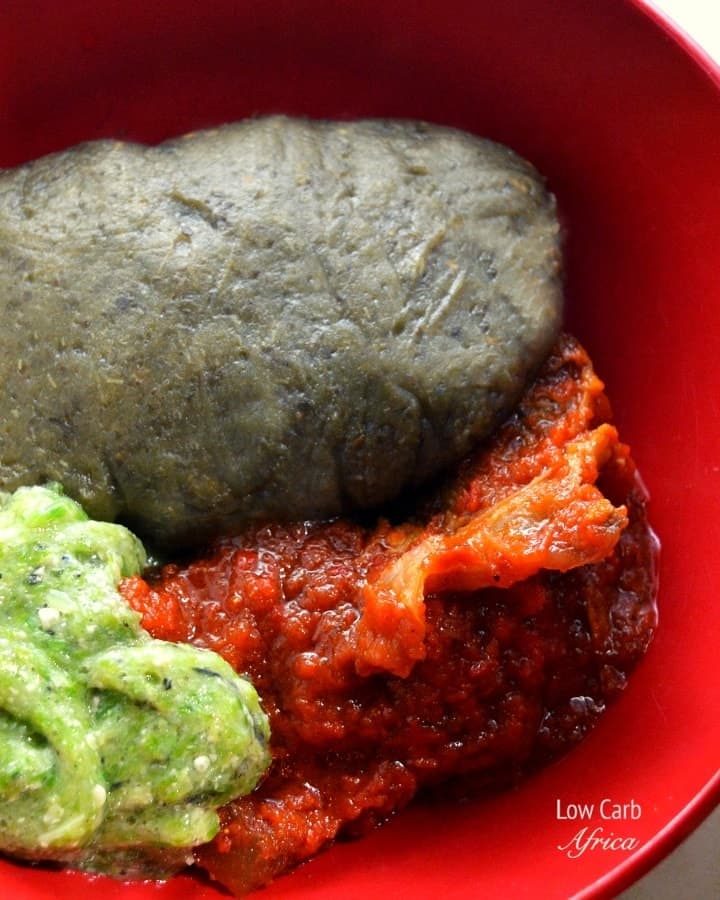Amala
Àmàlà is a staple swallow food originating from Nigeria popularized by the Yoruba ethnic group of southwestern Nigeria and other parts of Yorubaland. It is made of yam, cassava flour, or unripe plantain flour. Tubers of yams are peeled, sliced, cleaned, dried and then ground into flour. It is also called èlùbọ́. Yams are white in colour but turn brown when dried which gives àmàlà its colour. It is a popular side dish served with ewédú and gbẹ̀gìrì , but is also served with a variety of other ọbè (soups), such as ẹ̀fọ́, ilá, and ogbono. There are three types of àmàlà: àmàlà isu, àmàlà láfún, and amala ògèdè. Àmàlà isu, the most common type of àmàlà, is yam-based. The particular yam species best for preparing àmàlà is Dioscorea cayenensis (Ikoro) because of its high starch content. Because of its perishability, yam is often dried and made into flour. The flour can then be reconstituted with hot water to form a paste or gel called kokonte in Ghana and Togo, and àmàlà in Nigeria. Àmàlà isu is made of dried yam. This gives it a black/brownish colour when added to boiling water. Amala is rich in carbohydrates and is an important source of carbohydrate, especially in the yam zone of West Africa.
Source: Wikipedia






